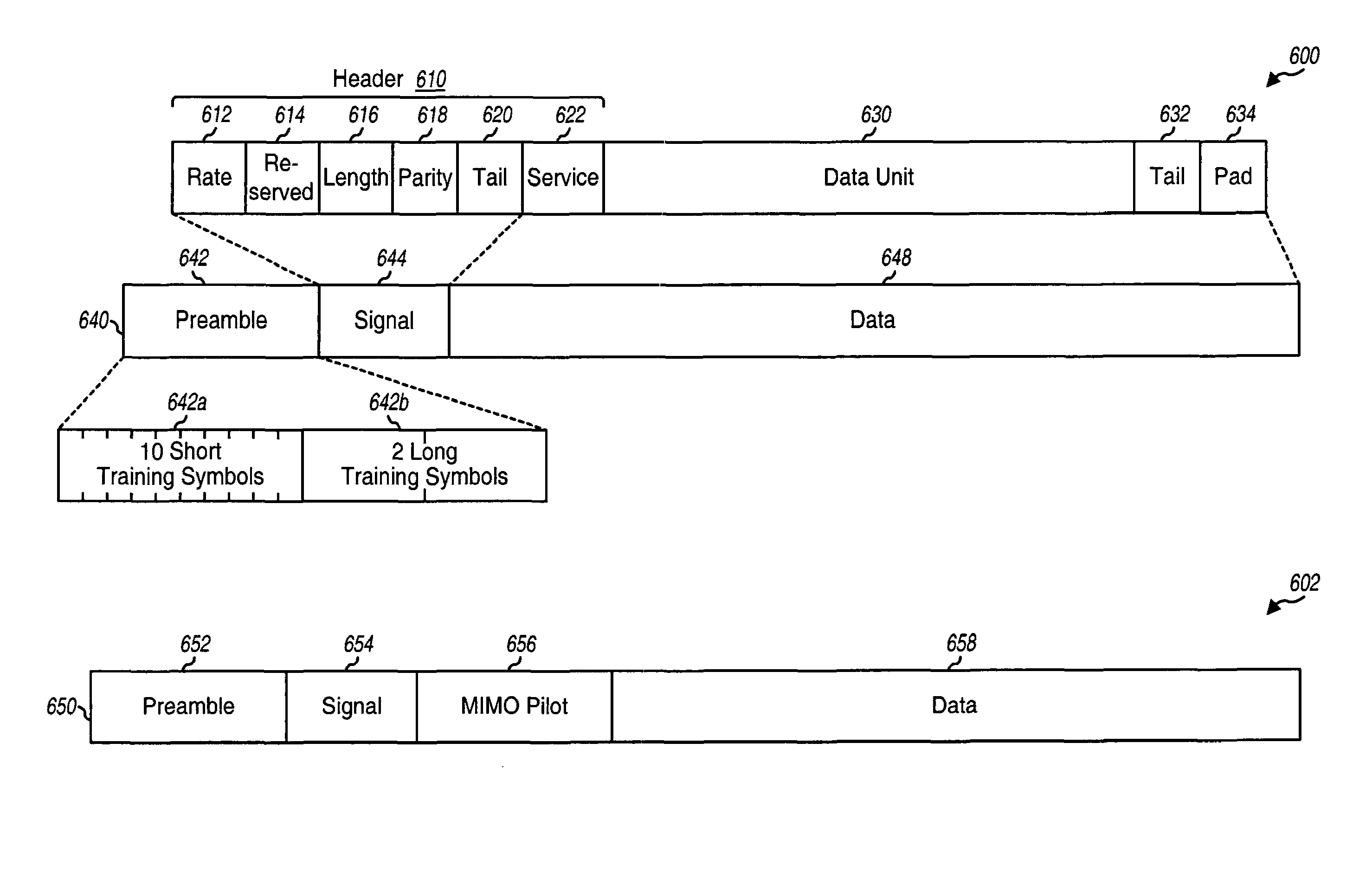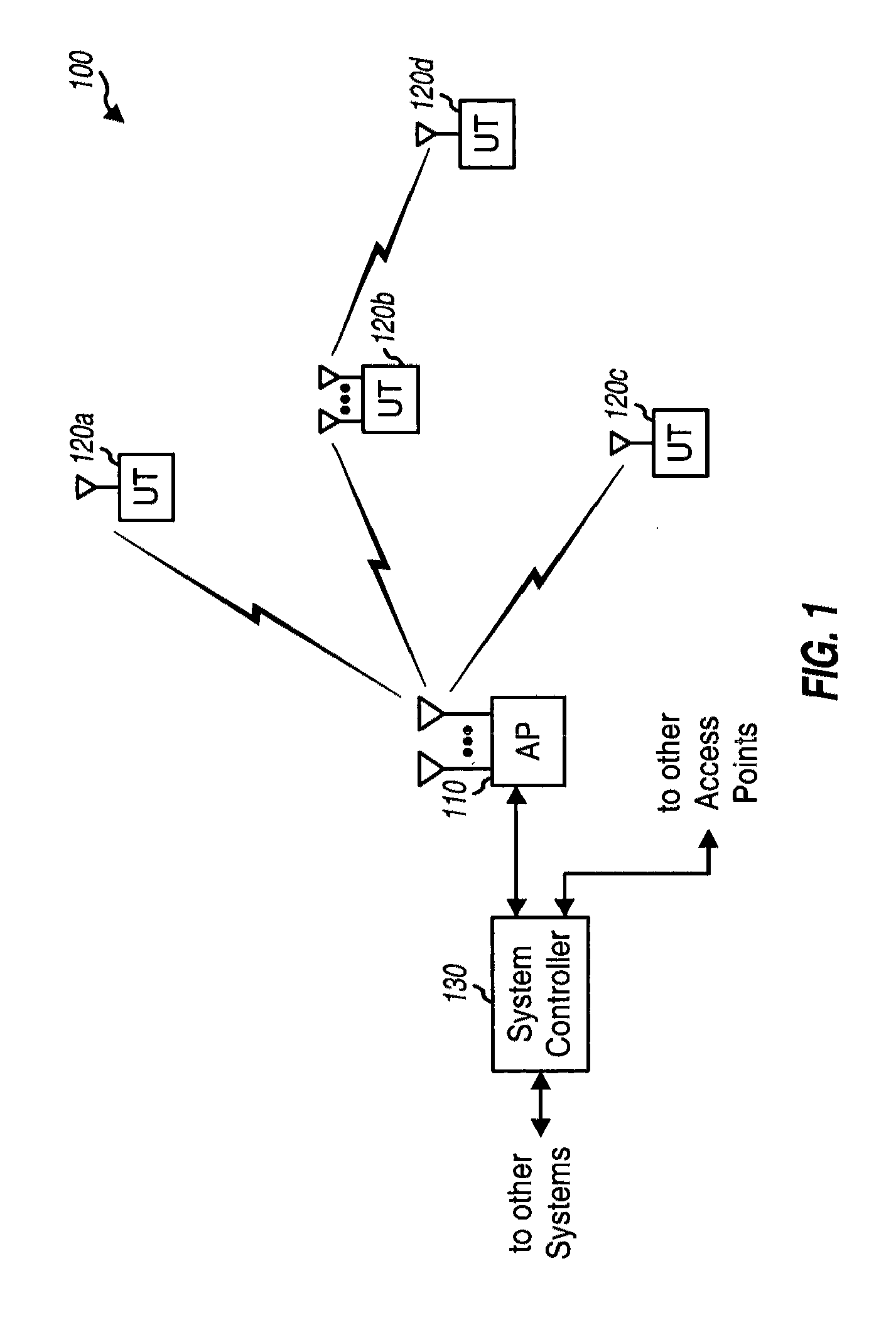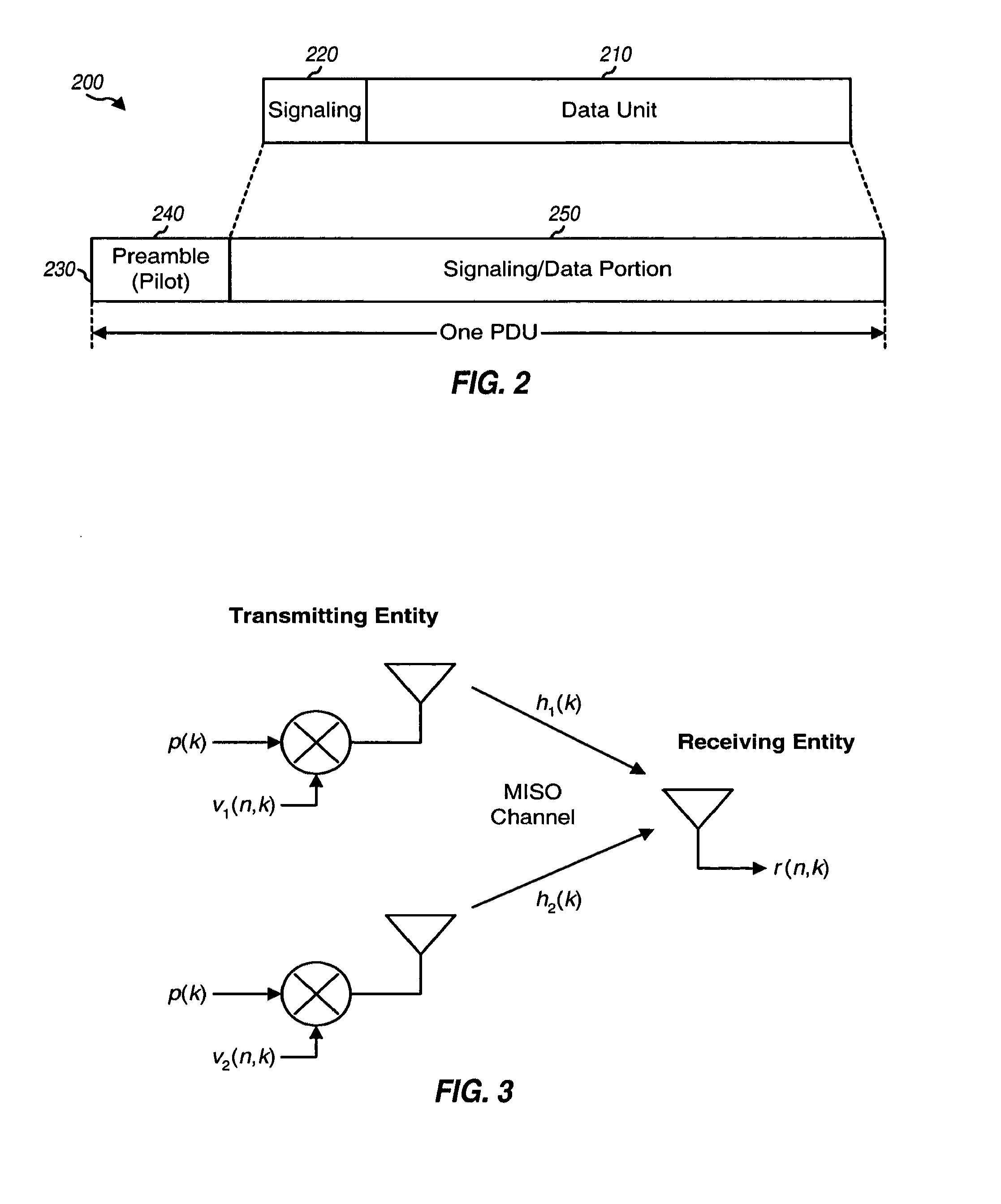Transmit diversity and spatial spreading for an OFDM-based multi-antenna communication system
a multi-antenna communication and diversity technology, applied in the field of communication, can solve the problem that the legacy single-antenna device cannot perform the special processing required by most conventional transmit diversity schemes
- Summary
- Abstract
- Description
- Claims
- Application Information
AI Technical Summary
Benefits of technology
Problems solved by technology
Method used
Image
Examples
Embodiment Construction
[0020]The word “exemplary” is used herein to mean “serving as an example, instance, or illustration.” Any embodiment described herein as “exemplary” is not necessarily to be construed as preferred or advantageous over other embodiments.
[0021]FIG. 1 shows a multi-antenna system 100 with an access point (AP) 110 and user terminals (UTs) 120. An access point is generally a fixed station that communicates with the user terminals and may also be referred to as a base station or some other terminology. A user terminal may be fixed or mobile and may also be referred to as a mobile station, a wireless device, a user equipment (UE), or some other terminology. A system controller 130 couples to the access points and provides coordination and control for these access points.
[0022]Access point 110 is equipped with multiple antennas for data transmission. Each user terminal 120 may be equipped with a single antenna or multiple antennas for data transmission. A user terminal may communicate with ...
PUM
 Login to View More
Login to View More Abstract
Description
Claims
Application Information
 Login to View More
Login to View More - R&D
- Intellectual Property
- Life Sciences
- Materials
- Tech Scout
- Unparalleled Data Quality
- Higher Quality Content
- 60% Fewer Hallucinations
Browse by: Latest US Patents, China's latest patents, Technical Efficacy Thesaurus, Application Domain, Technology Topic, Popular Technical Reports.
© 2025 PatSnap. All rights reserved.Legal|Privacy policy|Modern Slavery Act Transparency Statement|Sitemap|About US| Contact US: help@patsnap.com



